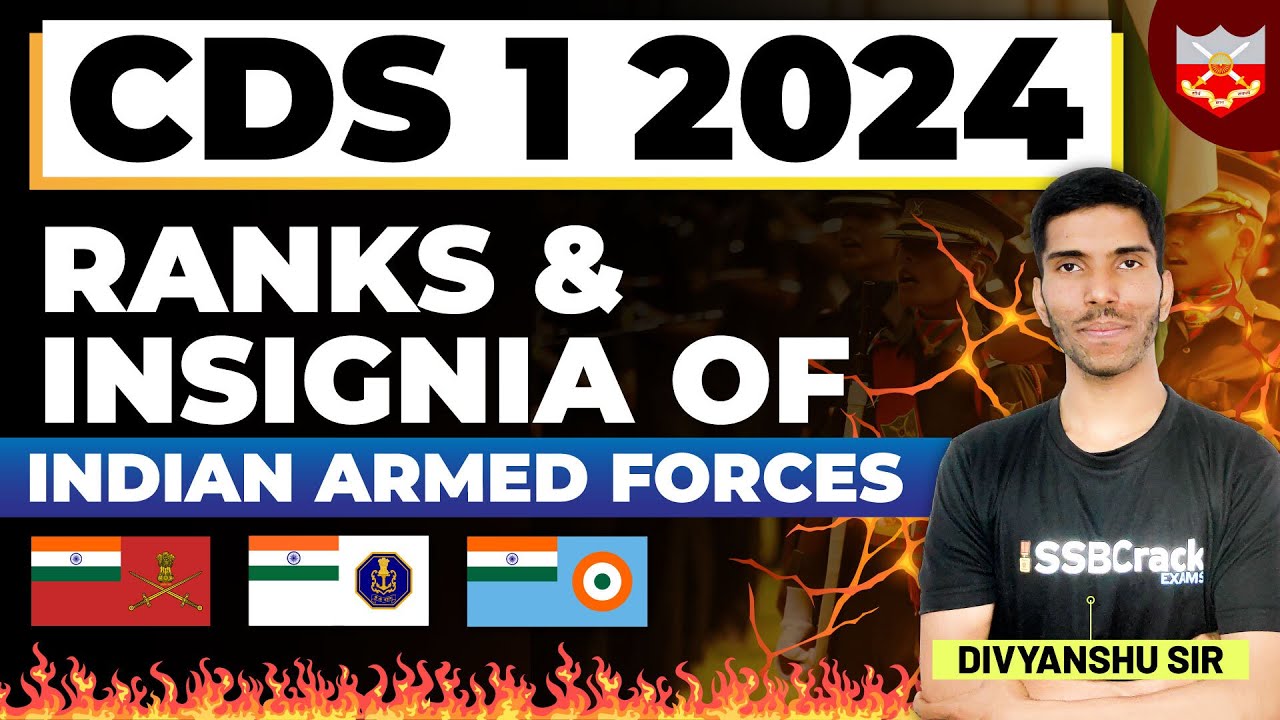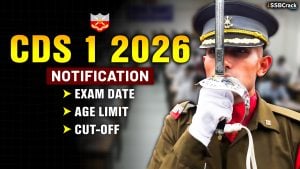The CDS serves as the cradle of leadership for the Indian Armed Forces, nurturing and molding young minds into future military officers. The CDS, through its rigorous training programs, not only instills discipline and courage but also imparts a profound understanding of military structure and hierarchy. As the CDS 1 2024 batch embarks on their journey, understanding the ranks and insignia of the Indian Armed Forces becomes paramount.
CDS 1 2024 Ranks and Insignia of Indian Armed Forces
Indian Army:
The Indian Army, the largest component of the Indian Armed Forces, operates on a well-defined hierarchical structure. Here are the ranks and corresponding insignia:
- Field Marshal (Highest Rank): This rank is an honorary one and is held by the senior-most officer of the Indian Army. The rank is denoted by a five-star insignia, comprising crossed baton and saber surrounded by a wreath of lotus flowers.
- General (Chief of Army Staff): The Chief of Army Staff is the highest-ranking officer in the Indian Army. The rank is denoted by a five-star insignia with a national emblem above crossed baton and saber.
- Lieutenant General: The Lieutenant General’s insignia features a crossed baton and saber.
- Major General: This rank is indicated by a national emblem over a crossed baton and saber.
- Brigadier: Brigadiers are recognized by their national emblem over a crossed baton and saber with a single star.
- Colonel: Colonels display a national emblem over a crossed baton and saber.
- Lieutenant Colonel: The insignia includes a national emblem over a crossed baton and saber with one star.
- Major: Majors are identified by a national emblem over a crossed baton and saber.
- Captain: Captains display three stars.
- Lieutenant: Lieutenants are recognized by two stars.
- Second Lieutenant: Second Lieutenants have a single star as their insignia.
- Junior Commissioned Officers (JCOs) and Other Ranks: JCOs and other ranks have specific insignia denoting their rank and branch.
Indian Navy:
The Indian Navy, safeguarding India’s maritime interests, has a distinct set of ranks and insignia:
- Admiral of the Fleet (Honorary): This is the highest rank, held by the senior-most naval officer. It is an honorary rank.
- Admiral (Chief of the Naval Staff): The Chief of the Naval Staff holds this rank, denoted by five stars.
- Vice Admiral: Vice Admirals have three stars.
- Rear Admiral: Rear Admirals have two stars.
- Commodore: Commodores display a national emblem over a strip of three stripes.
- Captain: Captains have four stripes.
- Commander: Commanders have three stripes.
- Lieutenant Commander: Lieutenant Commanders display two stripes.
- Lieutenant: Lieutenants have a single stripe.
- Sub-Lieutenant: Sub-Lieutenants are identified by a national emblem over a single stripe.
Indian Air Force:
The Indian Air Force, the aerial arm of the Indian Armed Forces, follows its own hierarchy, represented through distinctive insignia:
- Marshal of the Air Force (Honorary): This is the highest rank, held by the senior-most officer. It is an honorary rank.
- Air Chief Marshal (Chief of the Air Staff): The Chief of the Air Staff holds this rank, denoted by a national emblem over three stars.
- Air Marshal: Air Marshals display three stars.
- Air Vice Marshal: Air Vice Marshals have two stars.
- Air Commodore: Air Commodores have a national emblem over a stripe of one-and-a-half diamonds.
- Group Captain: Group Captains have a national emblem over a single-and-a-half diamond.
- Wing Commander: Wing Commanders have a national emblem over a single diamond.
- Squadron Leader: Squadron Leaders have a national emblem over a strip of one-and-a-half bars.
- Flight Lieutenant: Flight Lieutenants display a national emblem over a single bar.
- Flying Officer: Flying Officers have a national emblem over a stripe.
- Pilot Officer: Pilot Officers are identified by a national emblem alone.
Conclusion:
Understanding the ranks and insignia of the Indian Armed Forces is not just a matter of protocol but also essential for effective communication and respect for authority within the military. As the CDS 1 2024 batch undergoes training to become future leaders, this knowledge forms the bedrock of their journey towards serving the nation with honor, dignity, and valor.





















